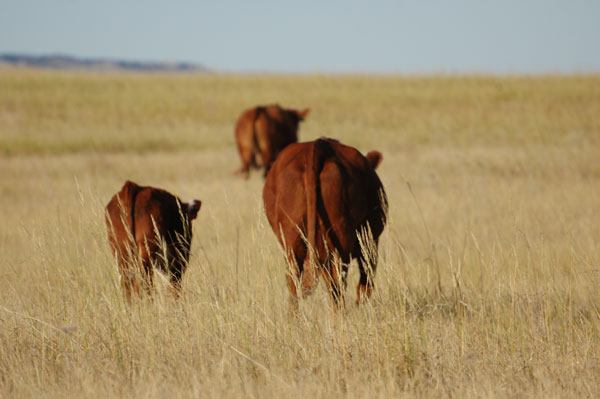July 28, 2016

“Controlling cost in the cow-calf sector is more important than creating revenue,” said David Lalman, Extension beef cattle specialist at Oklahoma State University.
In part, Lalman explained to those attending this summer’s annual meeting of the Beef Improvement Federation (BIF), the reason is that the cost of adding a pound of weaning weight is about the same as its value over time.
For instance, the cost per hundredweight of calf produced in Texas, Oklahoma and New Mexico increased an average of $5 per year from 1991 to 2015, according to data from the Southwest Cow-Calf Standardized Performance Analysis (SW-SPA). Calf prices increased an average of $5.25 per year.
Likewise, data from the Kansas Farm Management Association (KFMA) at Kansas State University (K-State) show the cost per pound of additional weaning weight from 2010 to 2014 was about 96 cents (basis 90% weaning rate), while the value was about 86 cents (basis Oklahoma City mean average).
“On average, the cost associated with increasing weaning weight in the Kansas data was slightly greater than the value of increased weaning weight,” Lalman explained. “The relative value of additional weaning weight is highly variable over time, and therefore, the profitability of managing to achieve greater weaning weight will be highly variable over time. Clearly, in the context of an enterprise that sells at weaning, there is more low-hanging fruit in cutting or managing cost than there is in increasing production.”
Lalman and other researchers at OSU and K-State also looked at cow-calf benchmarking data — too scarce in the industry — from the Cow Herd Appraisal Performance System (CHAPS) program at North Dakota State University; and FINBIN, data from the Center for Farm Financial Management at the University of Minnesota.
The breakeven nature of weaning weight over the long haul may offer a plausible explanation for the fact that weaning performance — measured by such databases — remains mostly static across decades, despite the fact that the genetic trend for growth in the heaviest-used breeds continues to increase at a significant rate.
“It may be that genetic potential for production of the seedstock sector has simply advanced beyond what the environment or resources will allow in these regions,” suggested Clay Mathis, director of the King Ranch Institute of Ranch Management, at the BIF meeting.

65 Photos That Celebrate Cowgirls & Cattlewomen
Ranch women are often the backbones of our cattle operations. Enjoy these stunning photos here.
“It is possible that the SPA summaries from the Southwest and Northern Plains simply show optimization, and that resources are dictating an upper limit to cost-effective performance … There is opportunity to improve pregnancy rate and weaning rate, but the marginal cost of higher performance may be prohibitive,” he said.
Although calf prices increased 88% between the two eight-year periods of 1988 to 1995 and 2008 to 2015, when adjusted for inflation, Mathis pointed out prices rose 18%.
At the same time, inflation-adjusted costs — especially those that matter most to ranch profitability — continue higher. For instance, the inflation-adjusted cost of labor was 9% higher, and the cost of feed was 24% more.
“Half of the expenses for a cow-calf enterprise can be categorized as depreciation, labor or feed,” Mathis said. “Other expenses, like repairs and maintenance, fertilizer, fuel, leases and veterinary services are important when taken together, but independently are less important.”
In the most recent KFMA data, Lalman explained 67.8% of the profitability differences between the top third and bottom third of producers was due to lower cost of production of the highest-profit producers.
“Future efficiencies and profits will not be mutually exclusive efforts to controlling costs and increasing revenues,” Mathis said. “Success will come from optimizing expenses and performance by building a production system that will yield the lowest unit cost of production for the most valuable calf that can be produced in the operational environment.”
You might also like:
4 facts to debunk "Meat is horrible" article
60 stunning photos that showcase ranch work ethics
Best risk strategy options for cattle producers
Does it really take six years to cover your costs on a cow? NO!
Photo Gallery: Get to know the 2016 Seedstock 100 operations
You May Also Like



